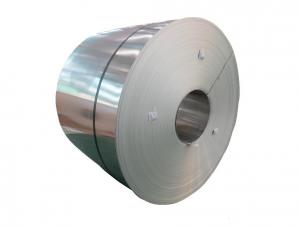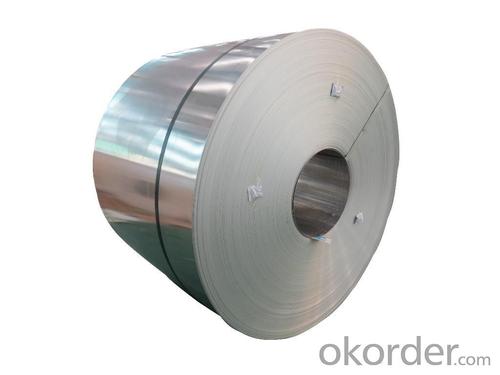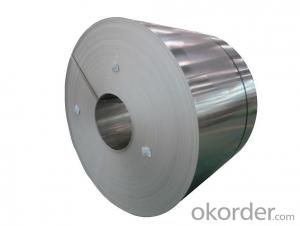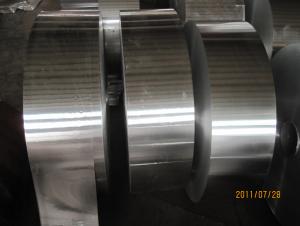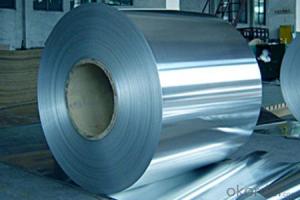Flat Aluminum Coil - Hot Rolled Aluminium Strip in Coils AA1050-F
- Loading Port:
- China Main Port
- Payment Terms:
- TT or LC
- Min Order Qty:
- -
- Supply Capability:
- -
OKorder Service Pledge
OKorder Financial Service
You Might Also Like
1.Structure of Product Description
2. Main features of the product
a.Competitive price---We have our own aluminium mills, and we can provide competitive price than other small suppliers.
b.Professional after-sale service---We have more than 20 years exportation experience. So you do not worry about the after-sales service.
3. Image 4. Product Specification
c.Fast delivery time---Our usual delivery time is about 30 days.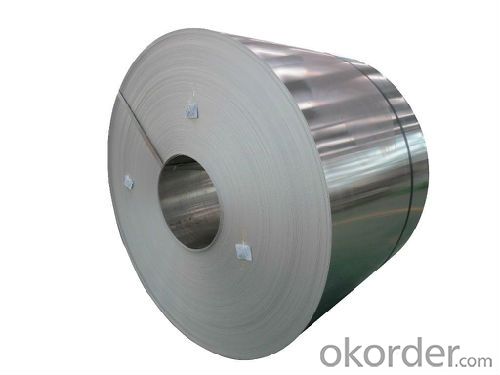
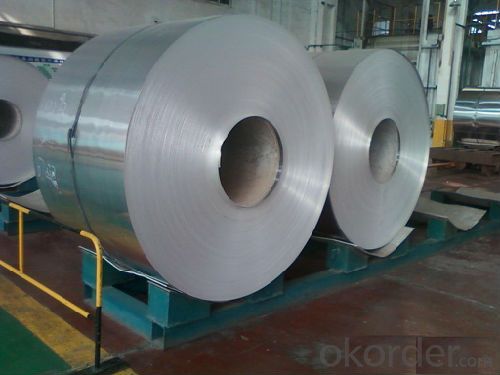
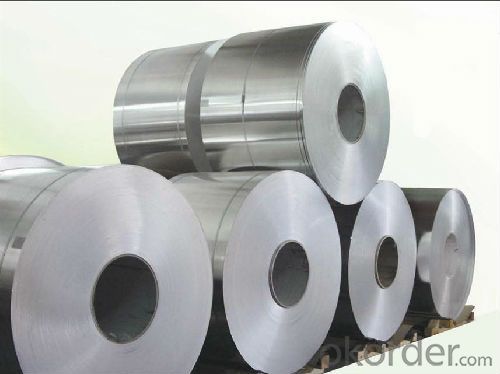
Alloy Temper Thickness Coil ID Coil Weight AA1050 F 3-8mm 610mm Min 5 tons
5.FAQ:
What is the quality standard?
---Usually our standard is GB3880-2006
What is the largest width?
---It is 2300mm
What is the MOQ?
---Usually we can accept 80 tons.
- Q: How to deal with too much aluminum powder in aluminum striping?
- Currently, there are bag dust-removal system and water dust-removal system. The former is very popular with enterprises because of low maintenance cost, accounting for over 90%. But the problem is the dust accumulation because the ventilation and dust removal systems are not produced in strict accordance with the standard. For example, controlling wind speed does not meet the requirement; ventilation and dust removal system does not meet the requirements of explosion-proof, including the set of pipes, series and parallel connection, the choice of dust removal system, the spark detection and extinguishing measures.
- Q: What is the role of aluminum coils in the construction of sports stadiums?
- Aluminum coils play a crucial role in the construction of sports stadiums due to their various beneficial properties. First and foremost, aluminum is known for its lightweight nature, making it an ideal choice for large-scale structures like stadiums. The use of aluminum coils in the construction of stadiums allows for easier transportation and installation, reducing construction time and costs. Furthermore, aluminum is highly resistant to corrosion, which is a significant advantage in an outdoor environment where stadiums are often exposed to harsh weather conditions. This corrosion resistance ensures the longevity and durability of the stadium's structure, minimizing maintenance and repair costs over time. Moreover, aluminum coils offer excellent thermal conductivity, meaning they efficiently transfer heat, allowing for effective temperature regulation within the stadium. This is particularly important in modern stadiums that require climate control systems to ensure comfort for both players and spectators. Additionally, aluminum is highly malleable and can be easily formed into various shapes and sizes, allowing for flexibility in the design and construction of stadiums. This versatility allows architects and engineers to create innovative and visually appealing structures, enhancing the overall aesthetic experience for visitors. In summary, the role of aluminum coils in the construction of sports stadiums is multifaceted. They provide a lightweight, corrosion-resistant, thermally conductive, and malleable material that allows for efficient construction, durability, comfort, and aesthetic appeal.
- Q: The temperature of the water drops from 93.0°C to 78.0°C. What quantity of heat energy did the piece of aluminum absorb?
- The specific heat of Aluminum is 0.215 cal/g-°C. The calories absorbed (q) would be q = m * c * (T2 -T1) = 22.0 g * 0.215 cal/g-°C * (78.0 °C - 0.3 °C) If you have a different value for the Specific heat of Aluminum, use it in the formula for your calculations. If you knew the mass of the water, you could check your calculations because the heat gained by the Al would be equal to the heat lost by the water, using q = m * c * (T2 -T1), where m is the mass of the water, c = 1.00 calorie/gram °C, T2 = 78.0 °C and T1 = 93.0 °C. The sign of q will be negative.
- Q: is there an anti-perspirant without aluminum in it for men? i saw there was a female question for it but i need a male one xD. something that you can find at your local wal-mart or such.
- Tom's organic care of significant is spectacular. i'm allergic to the aluminum in different manufacturers and after digging around i found this kind and have not had issues considering the fact that. i will even placed it on after shaving. dry off, slap a number of those products on and no inflammation what so ever. they have distinctive varieties so which you would be able to %. and choose what you % to apply. it somewhat is somewhat costly, yet i think of it somewhat is well worth it.
- Q: What are the different coil recoiling options available for aluminum coils?
- Depending on the specific requirements and desired outcomes, there are various options available for recoiling aluminum coils. One possibility is to use the oscillate recoiling method, which involves winding the aluminum coil in a zigzag pattern. This technique can help reduce coil set and improve flatness, making it ideal for applications where a flat, smooth surface is crucial. Another option is the traverse winding method, where the aluminum coil is wound back and forth in a controlled manner. This technique helps evenly distribute tension across the coil, minimizing the risk of coil breaks and ensuring consistent performance. Additionally, there are choices for coil slitting and rewinding. Slitting involves cutting the aluminum coil into narrower strips, which can be rewound into smaller coils. This option is commonly employed when smaller coil sizes are necessary for specific applications. Moreover, some recoiling options include coil rewinding with tension control systems. These systems ensure that the tension applied during rewinding is controlled and consistent, preventing overstretching or deformation of the aluminum coil. In conclusion, the selection of recoiling options for aluminum coils depends on factors such as desired surface finish, coil size requirements, and specific application needs. Manufacturers and processors of aluminum coils can offer guidance and expertise in selecting the most suitable recoiling option based on these considerations.
- Q: What are the factors that determine the price of aluminum coils?
- There are several factors that determine the price of aluminum coils. One of the main factors is the cost of raw materials. The price of aluminum is influenced by factors such as supply and demand, global economic conditions, and production costs. Fluctuations in these factors can directly impact the price of aluminum coils. Another factor that determines the price of aluminum coils is the manufacturing process. The cost of processing aluminum into coils involves various expenses such as labor, energy, and equipment. The complexity of the manufacturing process and the efficiency of the production line can affect the overall cost, which in turn influences the price of aluminum coils. Market conditions also play a crucial role in determining the price of aluminum coils. Factors such as market competition, industry trends, and geographic location can impact pricing. For instance, if there is a high demand for aluminum coils in a particular region but limited supply, the price may increase due to the scarcity of the product. Additionally, transportation and logistics costs contribute to the final price of aluminum coils. The distance between the manufacturing facility and the customer, as well as the mode of transportation, can affect the shipping expenses. These costs are typically factored into the overall price of the coils. Lastly, government policies and regulations can influence the price of aluminum coils. Tariffs, import taxes, and trade agreements may impact the cost of importing or exporting aluminum coils, thereby affecting the final price. In conclusion, the price of aluminum coils is determined by various factors including the cost of raw materials, manufacturing processes, market conditions, transportation costs, and government policies. It is essential for manufacturers and consumers to consider these factors when analyzing and forecasting the price of aluminum coils.
- Q: Can aluminum coils be used for sound insulation?
- No, aluminum coils are not typically used for sound insulation as they do not possess the necessary properties to effectively reduce or block sound transmission.
- Q: What are the common problems faced with aluminum coils?
- There are several common problems that can be faced with aluminum coils. One of the most common issues is corrosion. Aluminum coils are susceptible to corrosion, especially when they are exposed to moisture. This can lead to the formation of rust or other types of corrosion, which can weaken the coil and affect its performance. Another common problem is coil damage. Aluminum coils can be easily damaged during handling or transportation. This can result in bent or dented coils, which can impact their efficiency and lifespan. In severe cases, the coil may even develop leaks or cracks, causing refrigerant or coolant to leak out. Clogging is another issue that can occur with aluminum coils. Over time, dust, dirt, and debris can accumulate on the coil, obstructing the airflow and reducing the coil's efficiency. This can result in poor cooling or heating performance, higher energy consumption, and increased wear and tear on the system. Additionally, aluminum coils can suffer from coil leaks. These leaks can occur due to a variety of reasons, such as physical damage, corrosion, or manufacturing defects. When a coil develops a leak, it can lead to refrigerant or coolant leakage, which can affect the overall performance of the HVAC system. Lastly, improper installation or maintenance practices can also cause problems with aluminum coils. If the coil is not installed correctly or if regular maintenance is neglected, it can lead to issues such as poor airflow, inefficient cooling or heating, and increased energy consumption. In order to avoid these common problems, it is important to properly maintain aluminum coils by regularly cleaning them, inspecting for any signs of damage or corrosion, and ensuring proper installation and handling. Regular maintenance and timely repairs can help minimize the occurrence of these problems and ensure the longevity and efficiency of the aluminum coils.
- Q: Can recycled aluminum coils be reused to create new ones, or are they only suitable for disposal?
- <p>Old aluminum coils can indeed be recycled and used to make new ones. Recycling aluminum is an efficient process that conserves resources and reduces energy consumption compared to mining and refining new aluminum. The recycling process involves melting the old coils, which can then be reshaped into new coils without losing any of their properties. This makes recycling aluminum coils a sustainable and environmentally friendly alternative to disposal.</p>
- Q: How many 1220mm*2440mm aluminum sheets can one-ton aluminum coil be sliced to? Thank you.
- If it is 1.0mm thick, the coil can be sliced into 124 pieces. For other thickness, please use 124 divide the thickness.
Send your message to us
Flat Aluminum Coil - Hot Rolled Aluminium Strip in Coils AA1050-F
- Loading Port:
- China Main Port
- Payment Terms:
- TT or LC
- Min Order Qty:
- -
- Supply Capability:
- -
OKorder Service Pledge
OKorder Financial Service
Similar products
Hot products
Hot Searches
Related keywords
